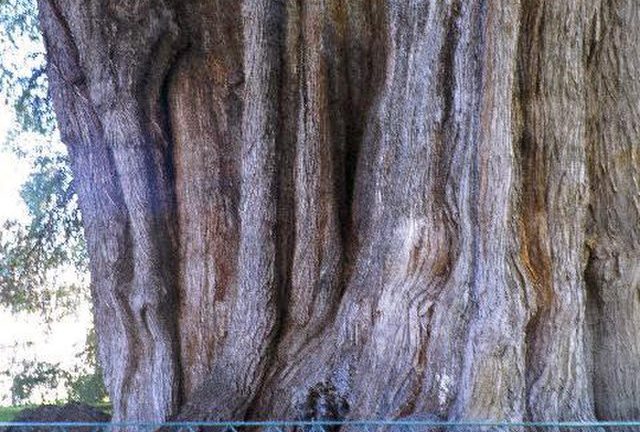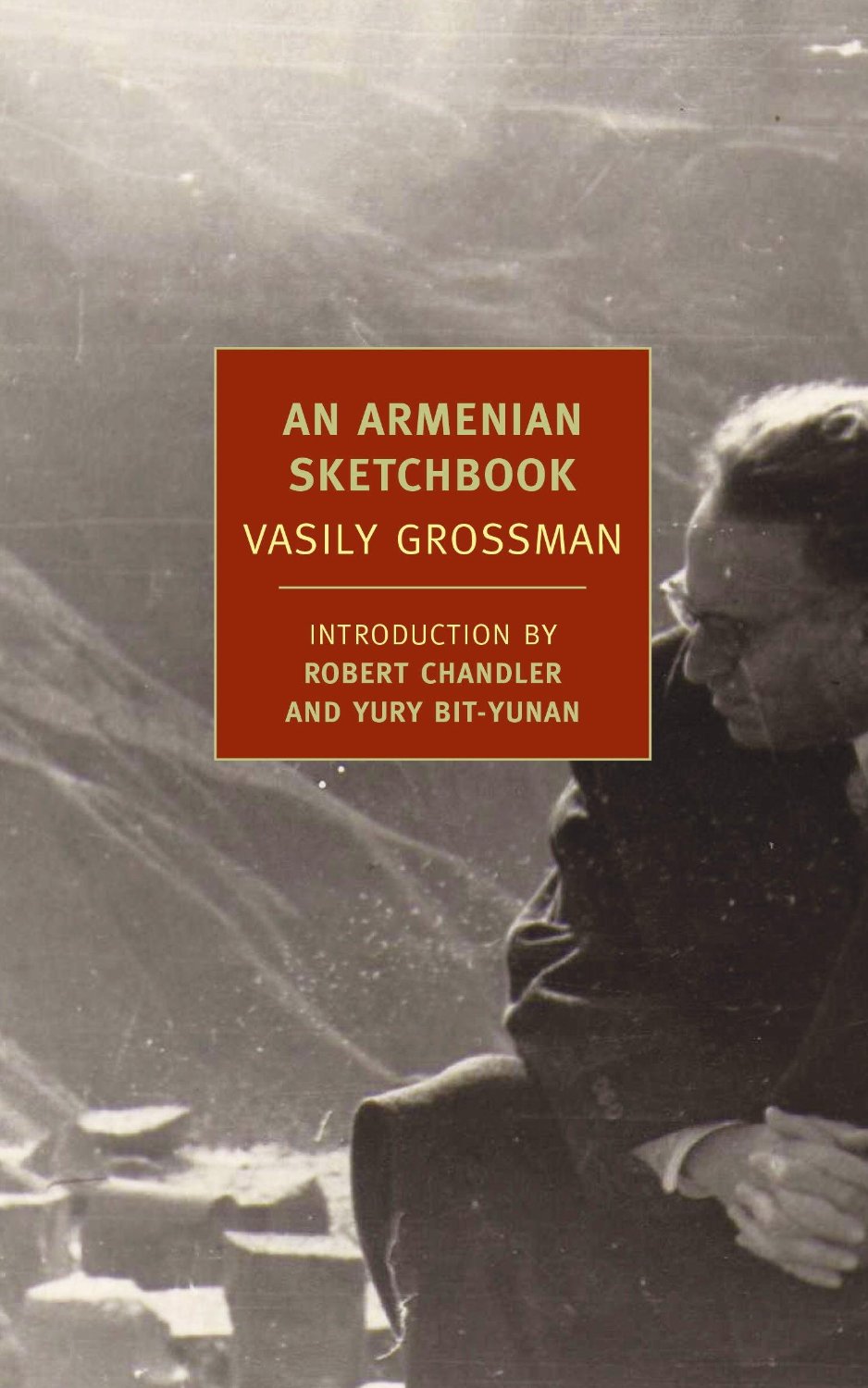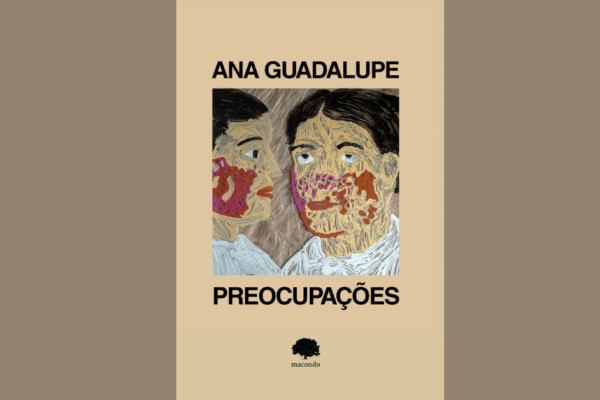“I don’t want to be a tree; I want to be its meaning.”
– Orhan Pamuk, My Name is Red (Translated by Erdağ M. Göknar)
It is, in fact, a tree, an ahuehuete, a kind of bald cypress, taxodium huegelii. On one of the very rare trips I made from my community into the capital of Oaxaca during my childhood, I was able to behold this monumental tree in the middle of the plaza in Santa María del Tule, a town about seven miles from the state capital and close to Mitla. From the window of the bus, my mother, Eneida, pointed to it for the first time: “That’s the tree,” she told me in Mixe, the language we normally used with one another. It was impossible to miss. Tree specialists estimate that it’s more than 2,000 years old, that its trunk’s diameter is more than 46 feet and its crown surpasses 190 feet wide with a height of almost 140 feet. The experience of beholding this magnificent tree, even from a small bus window, partially obscured by the dust from the mountains, left a profound impression on my childlike spirit, already enlivened by how close we were to the city I was about to see for the first time. Decades before, when my grandmother was fifteen, she walked from my community for almost two days to reach the capital, a city clad in green volcanic rock, where a photograph was taken of her with my mother, a photo we have retained to this day. Perhaps the two of them beheld that imposing tree together; maybe they were able to walk up to it and sit on some enormous wrinkle in its roots near the trunk, in the days before a metal fence was installed to protect it from endless waves of tourists.
According to traditional Mixe narratives, Kontoy—an amalgam of divinity and warrior hero—had descended into the central valleys of Oaxaca and decided to sit down to rest before scaling the mountains back into the sierra again. In that place of rest, he drove his long and weighty walking stick into the earth, where it was swiftly transformed into the enormous ahuehuete that I contemplated for the first time from the slow-moving bus. According to pertinent accounts, Kontoy—who had been able to protect his people from war, invasion, and injustice—traveled deep inside our sacred mountain, Zempoaltepetl, also known as the Twentieth Mountain. Before he entered the bowels of the earth, he promised he would return when the time came to spearhead the defense of the Mixe people once again. As long as Kontoy’s walking stick—that gigantic cypress—remains living, the promise of his return abides. A natural presence, this colossal tree reminds us of the resistance movements of the Mixe people; its meaning and symbolism have been renewed over the course of centuries. In colonial documents that record news of an Indigenous rebellion by Zapotecs, Mixes, and Chontales against the viceroyalty in 1659, the role of Kontoy is described in detail: one of the objectives of the rebellion was to cast off the Spanish governors’ yoke to allow for his own return, presaged as imminent by a slew of extraordinary events. As far back as my memories stretched into childhood and on myriad occasions afterward, I heard stories of the exploits of this hero-divinity venerated in traditional Mixe rituals, and I could finally witness his promise converted into the form of an ahuehuete, this cypress tree, the promise of my people’s resistance. On that day then, my mother not only pointed out a tree to me, but also its deepest significance.
The land that we inhabit—transformed into territory—is culturally and materially inscribed by all of us who inhabit it. We read the earth, and a tree becomes a messianic staff, a river indicates a border, while a mountain is a sacred place. We can also write on the earth and construct buildings like the Taj Mahal, leaving evidence of the life of a lost loved one upon the memory of the planet. Humanity’s interactions with the earth record the passing of populations and cultures upon its back, as well as the workings of oppression itself. In a sense, colonialism can be narrated as a process that wields violence and power to impose new readings and writings upon the very face of the earth. The construction of the metropolitan cathedral in the historic heart of Mexico City—erected upon the edifices of the former Tenochtitlan—evince, in a supremely eloquent way, the exercise of erasure and re-writing enacted by power. In an act of recovery of the hidden texts contained in the palimpsest of the Earth’s surface, my friend, the historian Miguel Ángel Recillas, would traverse Mexico City with the map of ancient Tenochtitlan at the top of his mind: “This is where the lake ends and dry land begins,” he would whisper solemnly, as if we were in the same location, only in 1518. “Remember that now we’re in the middle of the Tlacopan road,” he would repeat in another location.
As a continuation of that act of colonial writing on the earth, a wide array of monuments have also been erected. Etymologically, the word “monument” is related to the semantic spheres of remembrance and memory; a monument is erected with the intention of making us remember and, over the passage of time, as semiotic icons, even more meanings accrue. With the Western obsession with the faithful representation of people, faces, and human forms—so ably problematized by Orhan Pamuk in his novel My Name is Red—the monuments of the European tradition imitate human bodies: they are statues, bulky forms fashioned out of bronze, stone, or metal with a human head, arms, and legs. This custom continues to seem strange to me, and it still provokes aversion when I stumble upon a monument with a human form in the middle of the night in an unexpected place: mannequins on pedestals peering down at us as a pigeon deposits excrement on its shoulder, fleshless mummies exhibited in public spaces. For example, a statue of Christopher Columbus replicates—at least by intention—his actual body or the body he is assumed to have had. Unlike other traditions in which the buildings or monuments erected in homage to a well-known figure are temples, stone altars, or pyramids, Western tradition privileges the imitation of the human form on its statues. In the Mixe tradition, rather than statues showing the body of a divinity, its presence can be depicted with the body of a serpent or the thunderous arrival of a bolt of white lightning.
Along with the hierarchy the colonial system has inflicted upon the world, its peoples, and its cultures, that system has also imposed tangible representations of its own reading of history upon the surface of the earth, precisely through its deployment of statues. Thus, it is no surprise that during recent protests against racism or throughout historic struggles against oppression suffered by Indigenous peoples, it is felt necessary to topple the monuments used by colonialism to force us to remember and to constantly project its unfortunate contemporary reality. In the light of recent statues of Christopher Columbus knocked down in different sites in the United States, The Hispanic Council—an independent research institute that promotes relations between Spain and the US—thought it important to point out that the attacks on Columbus statues are not founded in historical fact, since one must take into account that he never actually set foot on territory of what we today call the United States. These explanations do not consider the fact that what protesters toppled was not the representation of Columbus—a flesh-and-blood human born more than five centuries ago—but rather the set of meanings, significations, connotations, and implications acquired by this figure: the symbolism of oppression. It is true that we can problematize, analyze, and historically situate the life and the acts of the human being who Christopher Columbus was, but knocking down statues dedicated to him goes far beyond that, it means rebelling against the acts of colonialist writing on the body of our territories, it means uprooting the statues out of the earth where the colonizer’s will implanted them, statues that symbolically colonize space with their weight and their presence. Toppling statues imbued with these meanings implies refusing to celebrate what needs to be problematized historically and questioned for its present-day consequences.
Many would argue that toppling or attacking statues of Columbus, Hernán Cortés or other historical figures actually has no effect on racism or present-day oppressions; they would insist that these are just symbolic acts. Nonetheless, symbolic acts are vital, so vital that other voices and other minds thought it necessary to erect these statues in the first place. If the symbolic were not important, they never would have been erected.
Though we employ a wide array of cultural mechanisms to spur on what Lautréamont referred to as the “wandering wolfpack of memories,” one tradition would seem to prefer the construction of statues above all else; nonetheless, it is always possible to read and write the territory in multiple ways without imposing one mechanism over another. We still have multiple possibilities, among them, the possibility that a tree might become a monument, a call to remember and the fulfillment of a promise. In the same place where a statue reminds us of colonialism, a tree responds: resistance.
About the Author
Yásnaya Elena A. Gil is a linguist from the community of Ayutla Mixe in Oaxaca’s Sierra Norte. She is a member of COLMIX, a collective of Mixe young people who engage in research and outreach activities focused on Mixe language, history, and culture.
About the Translator
JD Pluecker is a language worker who writes, translates, organizes, and creates. Forthcoming book-length works include Between Language and Justice by Antena Aire (a collaboration between JD & Jen/Elena Hofer that lasted from 2010-2020) from The Operating System and JD’s translation of Basura / Trash by Sylvia Aguilar Zéleny from Deep Vellum Press.
Image Credit: Wikimedia Commons



